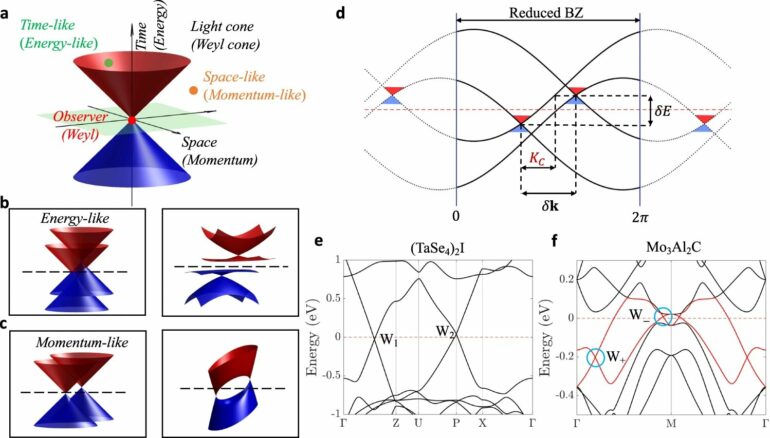The behavior of electrons’ mass within a solid has a significant impact on the flow of electronic and heat energy. Weyl semimetals have emerged as a fascinating class of materials with unique properties. Physical and chemical properties of Weyl semimetals are governed by Weyl fermions, which behave in interesting and unusual ways.
Unlike conventional fermions such as electrons, Weyl fermions are massless particles that behave as analogs to the famous Weyl equation initially proposed by Hermann Weyl in the late 1920s. These massless Weyl fermions exist in pairs, with opposite “handedness.” The handedness of Weyl fermions is tied to their topological nature, leading to a host of fascinating consequences, such as nontrivial surface states and exotic transport phenomena, which are robust against disorder and perturbations.
These massless Weyl fermions have caught the attention of scientists and technology experts because they could be crucial for upcoming advanced technologies. In the realm of quantum technologies, massless Weyl fermions in Weyl semimetals have been considered as potential game-changers due to their ability to enable frictionless transmission of quantum information. This can be really handy for future technologies that require precise and efficient information exchange.
The new research published in Physical Review B by scientist from Max-Born Institute Berlin Germany and Indian Institute of Technology Bombay India has challenged the idea that these Weyl fermions are truly massless.
In particular, if the mass of the Weyl fermions were truly zero, then electron currents generated at the same Weyl node by the laser fields of opposite handedness, i.e., rotating clockwise and counter-clockwise, would observe perfect mirror symmetry—just like the light itself. However, these findings reveal an unexpected and fascinating deviation from this perfect mirror symmetry, even when the wavelength of the laser field is tuned to transition energies very close to the Weyl point.
The observation remains unchanged even for the weakest light intensities studied. The origin of this effect lies in seemingly tiny but nevertheless substantial deviations of the mass of the Weyl fermions from zero, even very close to exact location of the Weyl nodes: The zero-mass region appears to shrink to a single point.
More information:
Amar Bharti et al, How massless are Weyl fermions in Weyl semimetals, Physical Review B (2023). DOI: 10.1103/PhysRevB.108.L020305
Provided by
Max Born Institute (MBI)
Citation:
Are Weyl fermions truly massless? (2023, August 25)
